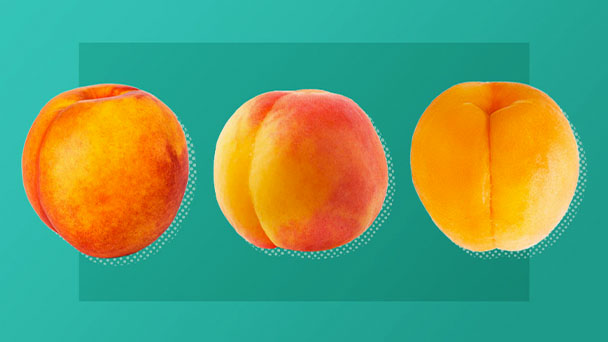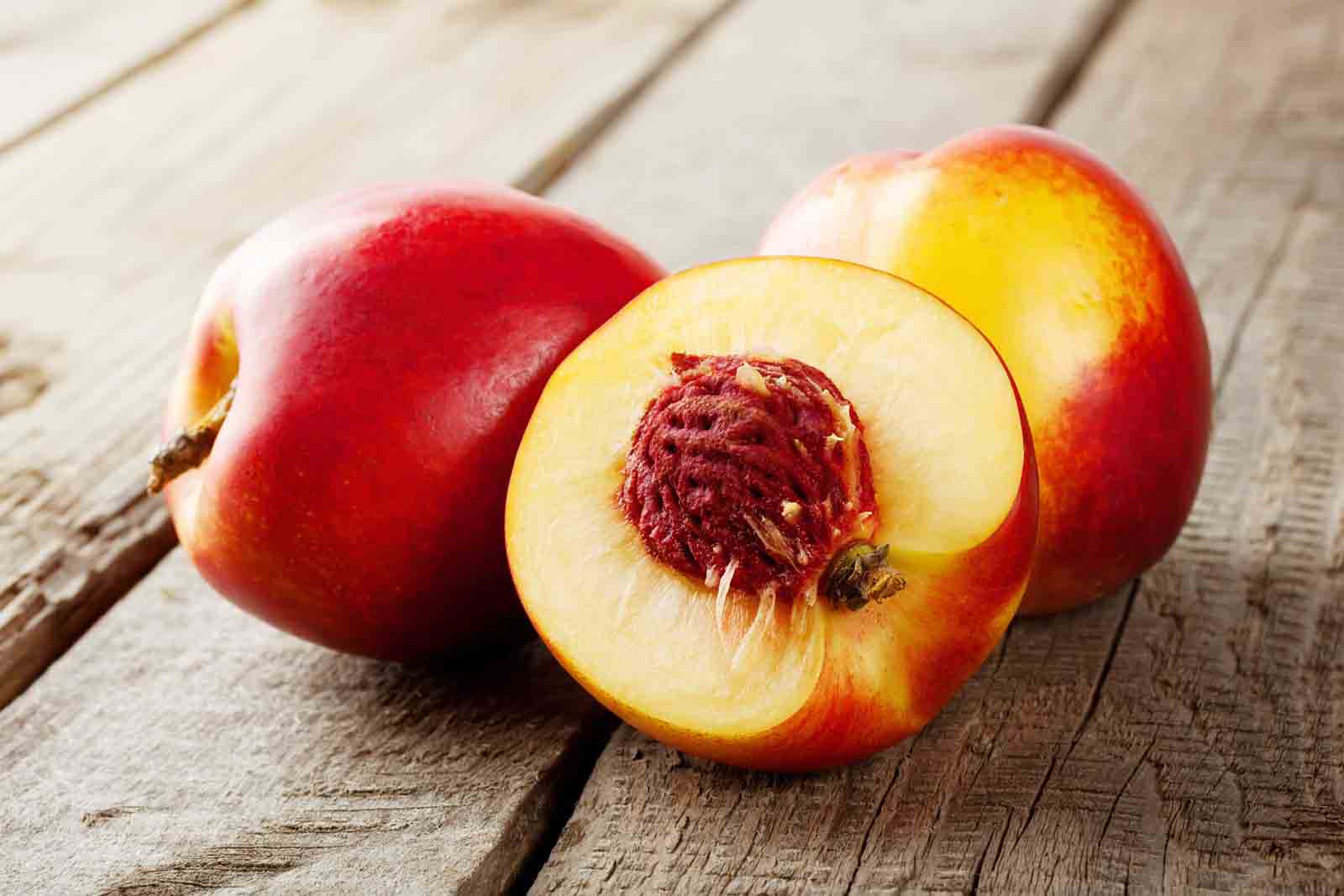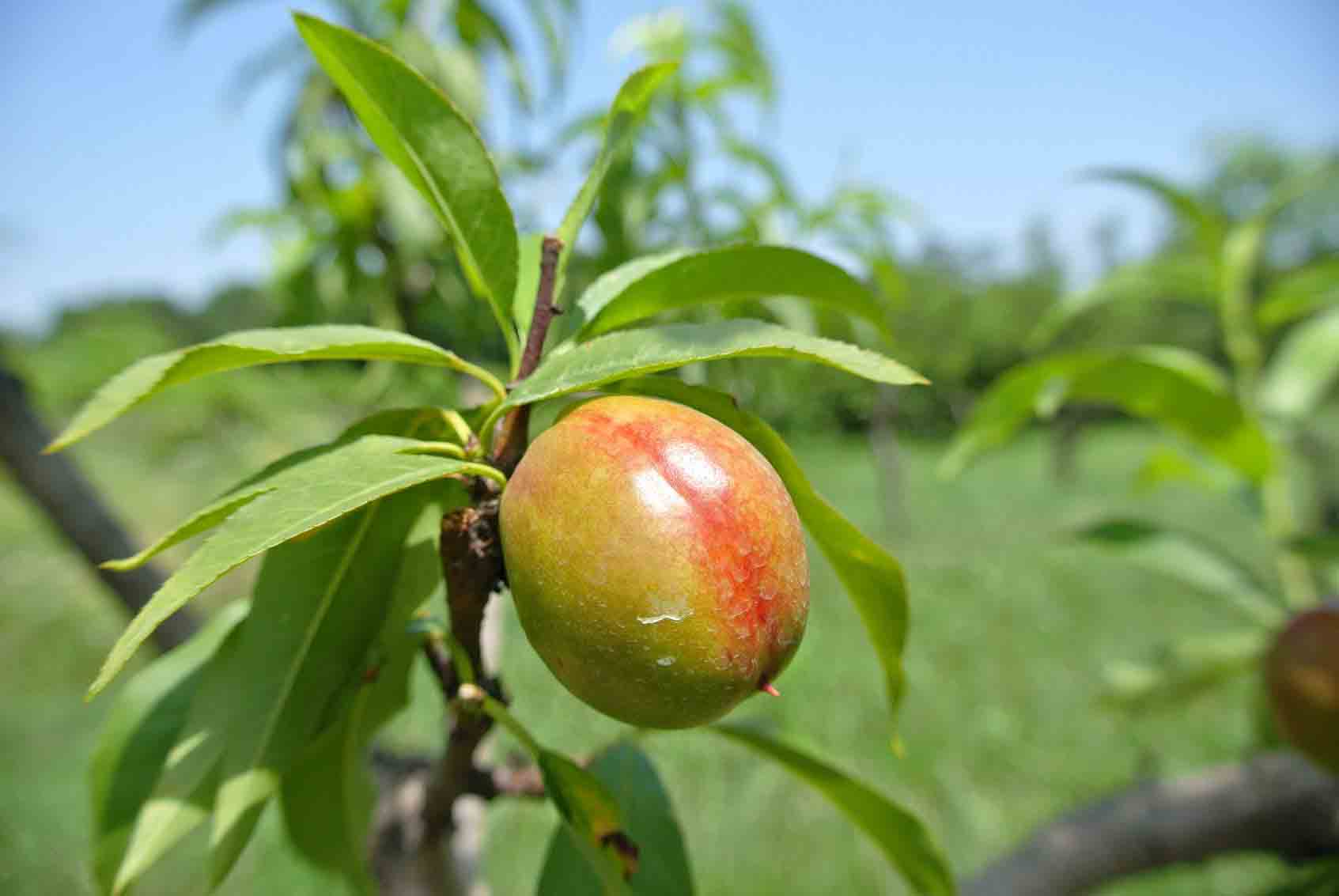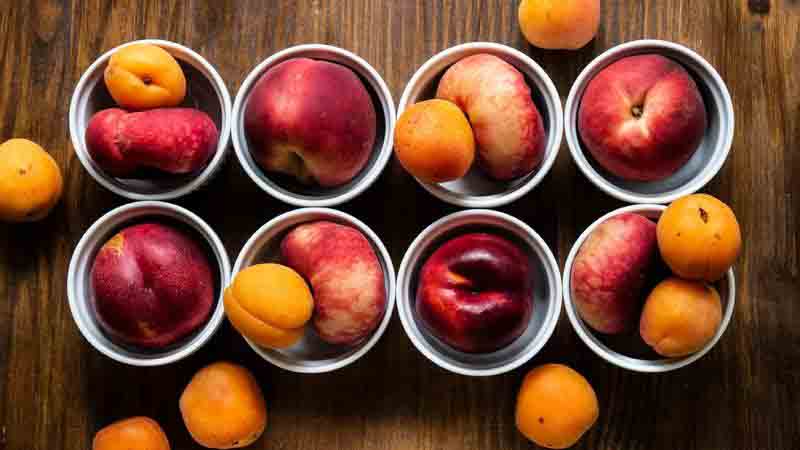Nectarine Profile
Written by Joy
Nov 06 2020

Nectarine is a variant of ordinary peach, a small deciduous tree whose fruit is used as a fruit. Nectarine originates from China and is distributed in Asia and North America.
Nectarine morphological characteristicsNectarine growth habit and growing environment and distributionNectarine efficacy and roleNectarine cultivationReproduction methodSoil managementWatering
In Northwest China, there are wild nectarines and small deciduous trees. Nectarine leaves are narrowly elliptic to lanceolate, 15 cm long and 4 cm wide. The flowers are solitary, from light to dark pink or red, sometimes white, with short stalks, 4 cm in diameter, and bloom in early spring; nearly spherical Drupe, edible flesh, orange-yellow to reddish, 7.5 cm in diameter, with a pit with deep pits and grooves, and white seeds inside.The production of nectarines in China started late, and the early varieties were mostly imported from Europe and the United States, and the taste was sour because they did not conform to the consumption habits of the Asians. But nectarine has high nutritional value, rich in vitamins, and has high edible value.
Nectarine morphological characteristics

The core of nectarine is easy to separate after maturity, and the seeds generally cannot germinate. The cores of fruits such as peaches and plums generally contain a very small amount of cyanide, which is slightly toxic, but not enough to cause adverse reactions and is not a major problem.
The flowers are solitary, opening before the leaves, 2.5-3.5 cm in diameter. The pedicel of the nectarine is very short or almost sessile; the calyx is tube-bell-shaped, pubescent, sparsely glabrous, green with red spots; sepals are ovoid to oblong, blunt apex, and pubescent; The petals are oblong-elliptic to broadly obovate, pink, rarely white. The stamens of nectarine are about 20-30, and the anthers are crimson; the style is almost as long as or shorter than the stamens; the ovary is pubescent.

Nectarine growth habit and growing environment and distribution
According to incomplete statistics, at least three nectarine varieties have been promoted to more than 20 provinces, cities, and autonomous regions except for Taiwan, Tibet, Hainan, and Guangdong.Nectarine is a variant of ordinary peach, and the main producing areas are mainly northern regions such as Shandong and Hebei. Its adaptability to soil and climate and cultivation techniques are basically the same as ordinary peaches. Nectarine fruit is smooth and hairless, and the peel toughness is poor. Most nectarine varieties are easy to crack and produce sunburn under the high temperature and humidity conditions in the south. In the south, short, low-temperature and early-maturing varieties and extra-early-maturing varieties are generally selected, and it is best to choose varieties that do not crack or lightly crack the fruits through southern production practices. In addition, due to the high temperature and high humidity in the southern region from June to August, pests and diseases are particularly serious, especially mites and pests. Therefore, it is best to choose early and extra-early mature varieties that mature before July.
Nectarine efficacy and role

Nectarine is rich in nutrients, containing 13% sugar, 1.5% organic acid, 1% pectin and 1.1% protein. Every 100 grams of pulp contains vitamin C12, phosphorus 40, calcium 12, iron 0.8, and magnesium 14.5. In addition, nectarine also contains 17 kinds of amino acids, carotene, etc. that the human body needs.
Nectarine cultivation
Reproduction method

Nectarine has a large amount of pollen and strong self-pollination ability. Cross-pollination can enhance its fruit characteristics. Therefore, it can be mixed with other nectarines during cultivation, and the fruit quality will be better. Nectarine is divided into early, mid and late according to the maturity period, and can be flexibly selected according to the local market supply.
Soil management
To create a deep, loose and nutrient-rich soil environment for the root system, you should dig deep and fertilize before building the garden or dig the soil for concentrated fertilization, and then gradually expand the hole in combination with the autumn application of base fertilizer. Cultivation and weeding. Nectarine has a well-developed root system and requires better aeration conditions. During the growing season, repeated field tillage and weeding are carried out to ensure that the surface is loose and beneficial to the rapid growth of nectarine. Reasonable intercropping. In order to increase the light and heat of the land, the water and air resources can be intercropped appropriately in the kindergarten, but the green manure, melons, vegetables, beans and other low-stalk and short-crown crops that do not affect the growth and development, do not transmit related diseases and insect pests and do not compete with the tree for fertilizer and water.Watering

Latest Updated
- Benefits of Bugleweed - 7 Science-backed Health Benefits
- Bugleweed Dangers & Side Effects - Is It Poisonous?
- How to Plant Evergreen Trees - What You Should Know
- When to Plant Evergreens - Grow Guide for Evergreen Trees
- 12 Wonderful Evergreen Shrubs for Your Garden
- 12 Popular Evergreen Plants with Pictures for Beginners
- When And How To Prune A Lilac Bush Like a Pro
- How to Grow & Care for Lilac Vine (Hardenbergia Violacea)
- Japanese Lilac Tree (Syringa Reticulata) Care & Propagation Guide
- Shumard Oak Pros and Cons - What to Know
Popular Articles
- Winter maintenance of Antirrhinum Majus
- How to Grow Terminalia Mantaly Tree
- How to Grow and Care for Crossostephium Chinense
- How to grow Antirrhinum Majus in spring
- Peristeria Elata (Dove Orchid) Profile: Info & Care Guide
- Underwatered Snake Plant (Sansevieria Trifasciata) - Signs And How To Fix
- How to Care for Brazilian Jasmine Plant (Mandevilla Sanderi)
- How to Grow & Care for Graptopetalum Purple Delight in Summer
- Rosa Chinensis (China Rose): Plant Growing & Care Tips
- How to Care for Baby Sun Rose (Aptenia Cordifolia)